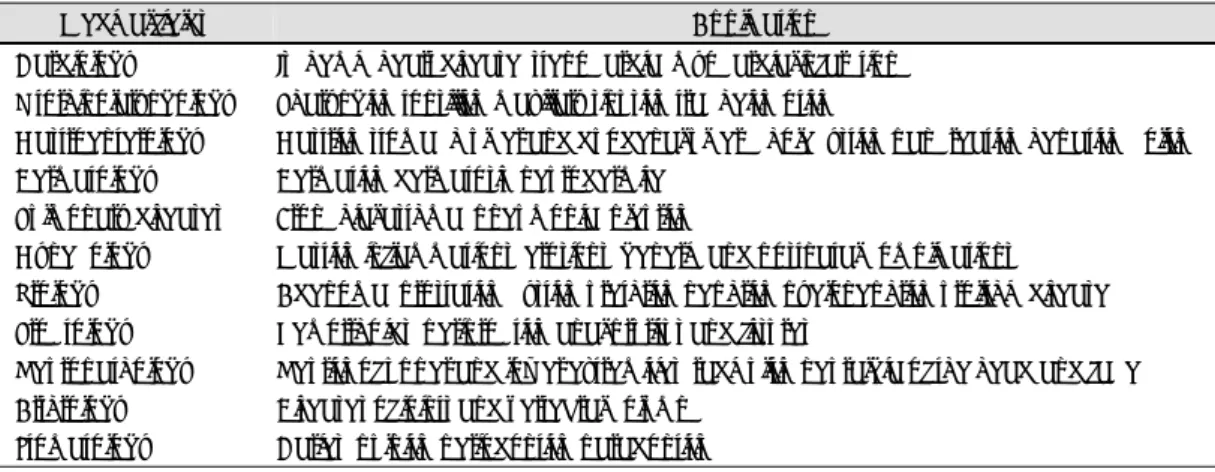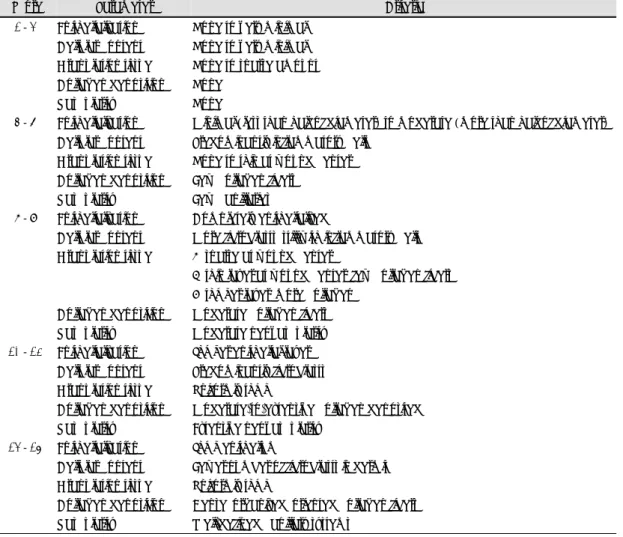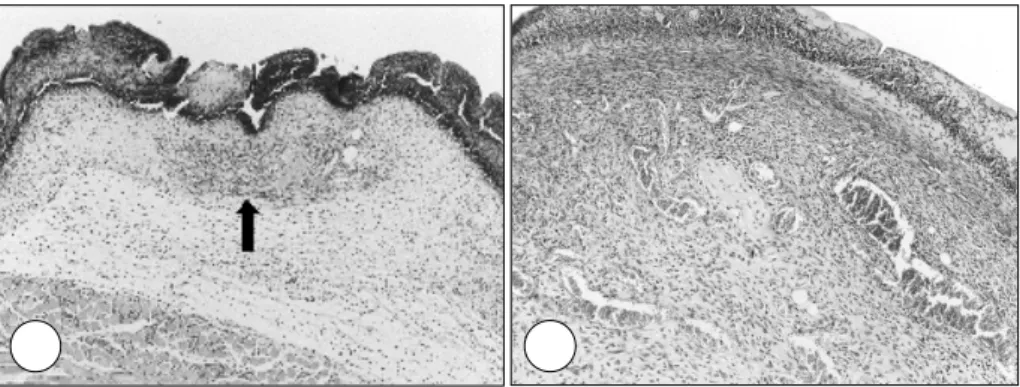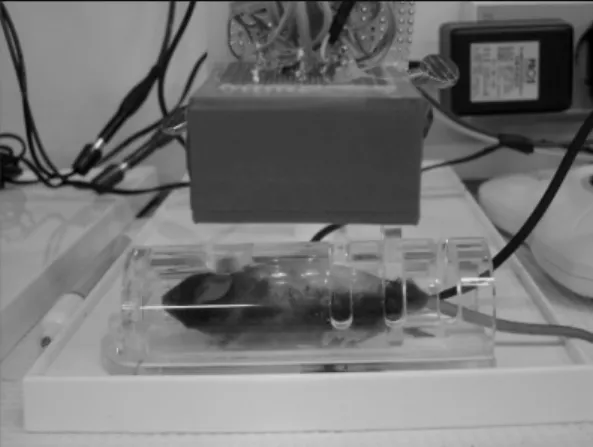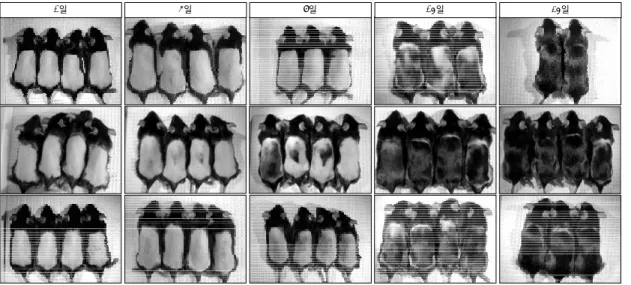저출력 레이저의 생체활성조절 효과
단국대학교 의과대학 이비인후-두경부외과학교실, 의학레이저연구센터
정 필 상·이 상 준
Biomodulation Effect of the Low-Level Laser Therapy(LLLT)
Phil-Sang Chung, MD and Sang Joon Lee, MD
Department of Otolaryngology-Head and Neck Surgery and Medical Laser Research Center, Dankook University, Cheonan, Korea
서 론
레이저는 출력에 따라 고출력(High-power)과 저출력 (Low-power) 레이저로 구분이 되는데 의학적인 분야 에 있어서 고출력 레이저는 3000~10000 mW정도로 외과적인 수술과정에서 조직을 절개하는데 사용되고 그 과정에서 열을 방출한다. 저출력 레이저는 1~500 mW 정도로 열을 발생하지 않는 상태에서 광에너지(photo energy)를 이용하게 된다.1) 고출력의 레이저는 대부분 세포에 있는 물에 흡수되어 열을 발생시켜 수분을 증발 시킴으로써 결국 세포나 조직을 태워버리는 효과를 가져 오게 되는데 반하여, 저출력 레이저는 열을 발생하지 않 는 것은 물론 어떠한 다른 손상없이 피부의 표면을 투과 하여 광 에너지만을 신체 내부로 전달하게 된다. 레이저 광선을 흡수한 신체 세포들은 광 에너지를 세포의 손상 을 치유할 수 있는 화학적인 에너지로 전환시켜, 이를 손 상된 부위의 치유(healing) 및 고통 완화(pain relief)에 이용하게 되는데 이러한 현상을 생체 촉진 효과(Bio- stimulation effect)라고 한다.2)3)
최초의 저출력 치료용 레이저는 1962년에 개발되었 는데, 1960년대말까지 헝가리의 Endre Mester가 저출
력 레이저의 상처치료 효과에 대하여 보고한 이후4) 다 른 의사나 학자들에 의해 저출력 레이저에 의한 생체대 사촉진 효과 및 적용부분에 대한 연구가 진행되었다. 또 한 1974년도에 구소련의 의약관리국은 최초로 레이저 기기를 임상적인 치료에 사용할 수 있도록 허가하였고 그 이후로 저출력 레이저 치료(low level laser therapy, LLLT)는 30여년 동안 의학적인 실습에서 폭넓게 인식 되어졌고 의학물리에 있어서 중요한 위치를 차지하게 되 었다. 1980년대 중반까지는 632.8 nm의 He-Ne laser 에 대한 연구가 활발히 진행되었고 또한 임상적인 실습 이 이루어졌다.5) 그리고 1990년대 말까지는 적색영역 (630~670 nm)과 적외선영역(830~1300 nm)의 diode laser의 생체촉진효과에 대한 연구가 이루어졌다. 이외에 청색계열과 자외선 영역의 레이저들은 특히 감염방지 부 분에 대한 연구가 활발히 이루어졌다.
LLLT에 의한 대표적인 생체촉진효과들은 항염증 효과 (anti-inflammation effect), 면역억제효과(immunosup- pressive effect), 혈관확장(vasodilatation), 혈행촉진(im- proved blood circulation), 진통효과(analgesic effect), 항부종효과(anti-edematous effect), 상처치유효과(sti- mulation of wound healing) 등이고 그 적용방법에 있어 서 대표적인것은 혈관에 대한 직접적인 Laser 조사(low level laser blood irradiation, LBI)이다.6-8) 이 LBI는 가장 오래된 LLLT의 적용 방법 중에 하나로서, 항염증효 과, 면역체계의 활성화, 혈관의 보호, 혈액미세순환(blood microcirculation)의 증진으로 인한 조직 영양공급, 재생 교신저자:정필상, 330-715 충남 천안시 안서동 산 16
단국대학교 의과대학 이비인후-두경부외과학교실 전화:(041) 550-3975・전송:(041) 556-1090 E-mail:pschung@dku.edu
과 수선기작의 활성화와 같은 생체촉진효과가 있음이 밝
혀졌다.9-13) 또한 적외선 LBI(IR-LBI) 역시 혈관의 보
호, 아테롬성 동맥경화증에 의한 반흔크기 감소, 동맥경 화증의 환자에서 혈액순환의 개선 등이 보고되었다.
현재는 전 세계에서 근골격계 손상, 동통, 염증 등의 치 료에 사용되고 있다. 영국에서도 물리치료 기관 중 40%
이상에서 사용되고 있으며, 스칸디나비아에서는 치과의 약 30%에서 사용되고 있다. 저출력 레이저는 다양한 임 상분야에서 치료목적으로 사용되고 있으며, 최근에는 류 마티스 관절염, 창상치유, 포진후 신경통, 손상된 신경회 복, 재발성 단순포진 감염, 백반증 등에 대한 효과가 보고 되었다.14-16)
이처럼 저출력 레이저에 의한 항염증효과, 면역촉진, 신경발달, 진통, 민감성완화, 살균, 항부종, 혈액순환 등 을 포함하는 여러 가지의 임상적인 효능 등이 확인됨에 따라 LLLT의 임상적인 적용분야는 매우 광범위하다 (Table 1).
본란에서는 저출력레이저의 여러 가지 생체활성 효과 중 창상치유효과와 모발성장촉진효과에 대한 고찰과 저 자의 실험을 소개하고자 한다.
창상치유 증진효과
창상치유는 염증(inflammation), 증식(proliferation), 합성(synthesis), 분화(maturation)과정을 거치는 일련의 복잡한 생체반응이다. 염증기는 지혈과 혈소판 탈과립
(platelet degranulation), 보체와 응집반응의 활성화 등 으로 이루어지며 이러한 반응들은 대식세포와 여러 가지 cytikine분비가 필수적이다. 증식기에서는 내피세포(en- dothelial cell)와 섬유아세포(fibroblasts)가 중요한 역 할을 하는데 섬유아세포는 주위 정상조직에서 이동하여 이른바“wound fibroblast”의 형태로 변화하여 교원질 (collagen)을 형성한다. 이러한 교원질의 형성은 교원질 분해효소에 의해 과형성이 조절되면서 분화기를 시작하 고 조직에 침착된다. 이러한 교원질의 침착은 약 5주에 걸 쳐서 일어나며 회복후 창상의 탄성력이나 외형을 결정하 는 중요한 요인이다. 이러한 창상치유를 좀 더 빠르게 유 도하거나 치유된 창상의 탄성력이나 외형이 좋아지는 것 은 수술자와 환자 모두의 큰 바람이다. 더욱이 요즘같이 당뇨나 고혈압등으로 인한 말초혈관과 조직의 부작용이 많거나, 수술전후의 방사선 치유로 인한 수술 창상의 회 복이 큰 문제로 대두되는 시기에서 창상치유의 증진은 더욱 더 중요한 문제로 대두된다.
Mester 등4)이 저출력 레이저가 창상치유를 자극하는 효과를 지닐 수 있다고 보고한 이후로 저출력레이저는 기 존 치유방법으로 인해 실패한 다양한 종류의 창상이나 궤 양치료에 시도되고 있다. 김 등17)은 소아 화상환자에서 기 존의 화상치료와 병행하여 diode레이저를 하루에 한번 씩 30분간 60 mW의 출력으로 조사함으로써 좋은 결과를 보였음을 보고하였다. 또한 저출력 레이저가 골절이나 방사선 골괴사 등으로 인한 골병변에도 회복을 증진시킬 수 있다는 연구결과도 있다18).
Table 1. The area for clinical application of low-level laser therapy in medicine
Medical fields Application
Cardiology Ischemic heart disease, stenocardia, myocardial infarction Otorhinolaryngology Pharyngitis, tonsillitis, maxillary sinusitis, tracheitis, otitis
Gastroenterology Gastritis, stomach ulcer and duodenal ulcer, cholecystitis, pancreatitis, hepatitis, colitis Dermatology Dermatitis, dermatosis, neurodermite
Pulmonary diseases Bronchial asthma, pneumonia, pleuritis
Gynecology Mastitis, inflammations, erosions, generic and postnatal complications Urology Adenoma, prostatitis, cystitis, urethritis, nephritis, pyelonephritis, urolithic disease Proctology Hemorrhoids, periproctitis, anal pruritus and fissures
Neuropathology Neuritis of upper and lower extremities, radiculitis, neuralgia of the head and face Arthrology Diseases of joints and vertebral column
Stomatology Caries, pulpitis, periodontitis, paradontitis
Karu 등에 의하면 레이저의 파장별로 생체에서 DNA 합성율을 증가시키는 정도가 다른데 404 nm와 454 nm 의 청색파장, 620 nm의 적색 파장, 760 nm와 830 nm의 적외선 파장등에서 세포활성화가 증진된다고 하였다.19)
저출력 레이저가 창상치유를 증진시키는 기전으로는 mitochondria 활성화, ATP합성, DNA & RNA 합성촉 진, 단백질 합성촉진, 효소반응의 조절, 세포내외의 pH 조절, 세포대사의 활성화 등이 제시되고 있다.20)21)
Mouse 유발창상에서 저출력레이저치료의 창상치유 증진효과 단국대학교 의학레이저 연구센터에서는 LLLT의 창 상치유 효과를 알아보기 위하여 건강한 mouse를 대상
Table 2. Criteria for scoring histologic sections
Score Parameter Criteria
01-3 Epithelialization None to very minimal Cellular content None to very minimal Granulation tissue None to sparse amount
Collagen deposition None
Vascularity None
04-6 Epithelialization Minimal (less than half of diameter) to moderate (more than half of diameter) Cellular content Predominantly inflammatory cells
Granulation tissue None to thin at wound center Collagen deposition Few collagen fibers
Vascularity Few capillaries
07-9 Epithelialization Completely epithelialized
Cellular content More fibroblasts, still with inflammatory cells Granulation tissue 7, sparse at wound center
8, thin layer at wound center, few collagen fibers 9, thicker layer, more collagen
Collagen deposition Moderate collagen fibers
Vascularity Moderate neovascularity
10-12 Epithelialization Thicker epithelial layer Cellular content Predominantly fibroblasts Granulation tissue Uniformly thick
Collagen deposition Moderate-to-extensive collagen deposited
Vascularity Extensive neovascularity
13-15 Epithelialization Thick epithelium
Cellular content Fewer number of fibroblasts in dermis Granulation tissue Uniformly thick
Collagen deposition Dense, organized, oriented collagen fibers Vascularity Well-defined capillary systems
Fig. 1. A:Control group, B:DPSS laser group.
A A A
A BBBB
으로 원형창상을 만들어 자연치유 되도록 놔둔 군과 DPSS (Diode Pumped Solid State, 532 nm) 레이저를 조사한 군 간의 창상치유증진효과를 비교하여 보았다 (Fig. 1).
창상치유증진효과의 비교
반경 20 mm의 창상을 유발한 후 각각 3일째, 7일째, 10일째의 창상의 단면적을 비교하였고 생검조직을 처 리하여 광학 현미경하에서 병리학자가 창상의 상피화 (wound epithelialization), 세포내용(cellular content), 육아조직형성(granulation tissue formation), 섬유소 침 착(collagen deposition), 신생혈관형성(neovasculariz- ation)등의 5가지 항목을 각각의 단계별로 점수화하여 창 상치유의 정도를 비교하였다(Table 2).
결 과
창상 단면적 변화관찰
대조군(자연치유군)에서는 창상 3일째, 7일째, 10일째 측정한 단면적의 치유율(%)이 24.0±2.7, 42.8±5.0, 71.4±4.0이었고, DPSS 레이저군에서는 33.2±2.4, 64.8±3.5, 82.2±7.9이었다. 대조군과 비교하여 3일째 부터 통계학적으로 유의한 수준에서 창상단면적 치유율 이 증가하였다(Fig. 2).
조직학적인 변화관찰
대조군에서 창상 3일째, 7일째, 10일째 측정한 조직학 적인 점수(histologic score)는 3.6±1.1, 7.0±1.0, 9.0±
0.7이었고, DPSS 레이저군에서는 각각 3.4±0.9, 9.0±
0.7, 10.8±0.8이었다. 창상치유의 정도를 대조군과 비교 한 결과는 7일째부터 DPSS 레이저군이 통계학적으로 유 의한 수준에서 창상치유가 의미 있게 증가하였다(Fig. 3).
모발성장 촉진효과
저출력 레이저의 생체자극 효과는 레이저 이용의 간편함, 접근의 용이성, 안정성, 비침습성 등으로 인하여 다양한 의료영역에서 이용되고 있다. 모발에 있어서도 저출력 레이 저 조사가 혈관확장, 혈액순환촉진 등의 생체자극 효과에 의해 모발성장에 영향을 줄 수 있을 것으로 기대되나, 아직 이에 대한 문헌은 매우 드물다. Vlacohs 등22)은 400~
Fig. 3. Histologic finding at 7days in control (A), DPSS laser (B). A:Control group, at 7 days, Note for thin layer of granu- lation tissue at wound center and moderate epithelialization change (histologic score:6, based on Table 1. H & E staining, ×100), B:DPSS laser group, at 7 days, Note for multiple extensive neovascularization (histologic score =10, based on Table 1. H & E staining, ×100).
AA
AA BB BB
Fig. 2. Gross finding at 7 days in control (A), DPSS laser (B) Note for more extensive whitish, crust formation at both laser group than control group.
A A A
A BB BB
1200 nm의 파장을 내는 intense pulsed light 광원을 사 용하여 화염상 모반(nevus flammeus)과 문신을 각각 제 거한 후 그 부작용으로 치료부위에 성모(terminal hair) 가 발생한 2예를 처음으로 보고하였으며, 이런 현상은 레이 저 치료부위에 수일간 염증반응이 심하였으므로 레이저 치료에 의한 국소적 염증반응에 의할 것으로 추측하였 다. 이러한 레이저의 부작용은 반대로 모발성장을 위한 레이저의 치료효과의 가능성을 기대하게 한다. 실제적으로, 2003년에 Satino 등23)은 35명의 안드로겐 탈모증 환자 (남자:28명, 여자:7명)를 대상으로 저출력 레이저 빛이 나오는 빗(HairMax LaserComb, Lexington Inter- national, Boca Raton, FL, 미국)을 사용하여 6개월간 2 일에 한번씩 5~10분 동안 머리를 빗도록 한 결과 남녀 모두 측두부 및 두정부에 모낭수 및 모낭 신장력(tensile strength)이 현저히 증가한 것을 보고하였다. 이 연구자들 은 저출력 레이저 조사가 모낭수 및 모낭 신장력을 증가시 킨 정확한 기전은 알 수 없으나, 창상치유 연구에서 밝혀진 저출력 레이저 조사에 의한 조직내 미세 혈액순환 증가와 염증 감소, adenosine triphosphatase(ATP) 형태의 세 포에너지 증가 등의 요소 중 하나 또는 그 이상이 작용했 으리라 추측하였다.
모발을 포함하는 주변 조직에 대한 효과
모발은 피부속에 있는 모낭(hair folicle)과 피부 밖 으로 나와있는 케라틴 성분인 모간(hair shaft, 모발)으 로 구성되어 있다. 모낭은 진피층속에 단단하게 고정되어 있고 계속적으로 모발을 형성하게 되는데 모낭의 손상이 없는 한 모발의 성장은 지속되는 것으로 알려져 있다
따라서 Laser 조사에 의한 효과는 모낭을 포함하고 있는 주변조직 세포들을 정상화시킴으로서 모낭을 두피에 단 단히 고정시키는 역할을 함으로서 탈모방지에 효과를 나 타낼 것으로 예상된다.
모낭에 대한 직접적인 효과
모낭과 모발에 대해서 저출력 Laser에 의한 직접적인 영향은 바로 모낭의 모유두(hair papilla)에 대한 효과이 다. 모유두가 존재하여야 모구(hair bulb)가 형성되고 이어 모발의 성장이 이루어지기 때문이다. Laser 조사에 의한
효과는 여러 원인에 의해 퇴화되는 모낭에 작용하여 모유 두를 이루고 있는 세포들의 성장을 촉진하여 모낭의 형성 에 기여할 것으로 보이며 또한 모낭으로부터 상피세포의 성장 역시 촉진함으로서 발모촉진의 기능도 수행할 것으 로 생각된다.
두피 염증반응에 대한 효과
두피에서의 염증반응은 가려움증 유발로 인한 물리적 손상, 염증반응에 의한 모낭세포의 파괴등을 유도하여 결국 탈모를 촉진하게 된다. 따라서 저출력 레이저 조사는 모발에서의 피지분비의 정상화, 염증반응의 감소 및 회 복은 두피의 조건을 향상시켜 탈모를 방지하게 될 것으 로 생각된다.
저출력 레이저가 마우스 모발성장에 미치는 효과 단국대학교 의학레이저 연구센터에서는 LLLT의 모발 성장 증진효과를 알아보기 위하여 면도기와 제모제를 이 용하여 마우스 등의 모발을 제거한후 아무런 처치를 하 지 않은 대조군, 저출력 레이저를 조사한 군, 발모촉진 제를 도포한 군으로 나누어 관찰하였다. 890 nm 파장의 diode 레이저(5 mW)((주) 프로스, 한국)를 사용하여 20 분씩 하루 1회 조사하였고(Fig. 4) 발모촉진제는 1일 1회 도포하였다. 실험시작 1, 7, 9, 15, 25일에 육안 관찰하였 으며 레이저 조사부위와 비조사부위의 모발성장의 차이 를 확인하기 위하여 레이저 조사 12일 후 조직검사를 시
Fig. 4. The photograph of low-power laser irradiation on the back skin of the mouse.
행하였다.
육안관찰
대조군에서 모발의 성장은 마우스 등의 모발제거 후 13 일 경부터 모발이 자라서 25일 경 모발이 원래 상태대로 회복되었다. 레이저를 조사한 군과 발모촉진제를 처치한 군은 각각 모발제거 후 9일 경부터 모발이 자라서 20일 경에 원래상태로 회복되었다(Fig. 5).
병리조직학적 관찰
레이저조사 12일 후 시행한 병리조직학적 검사상 레이
저를 조사한 부위에는 매우 많은 생장기의 모낭을 관찰할 수 있었으나, 레이저를 조사받지 않은 부위에서는 모낭이 거의 관찰되지 않았다(Fig. 6).
결 론
저출력 레이저의 생체활성효과가 알려진 이후 화상, 창상 치유, 탈모, 통증조절, 피부염, 관절염 등 다양한 임상분야 에서 주치료 혹은 보조요법으로 시도되고 있다. 앞으로 레 이저 기기의 발전과 더불어, 각 질환별로 사용되는 최적의 레이저 종류, 파장, 세기 등에 대한 동물 실험 및 임상경험
1일 7일 9일 15일 25일
Fig. 5. Change of the gross morphology of hair growth in the depilated area of mice according to the duration:
Control (upper), Laser irradiation group (middle), MoenMore applied group (lower).
Laser irradiated site
Control site
Fig. 6. The histopa- thologic findings of the mouse skin at the 12th day after depilation.
이 더 축적된다면 저출력 레이저의 응용범위는 한층 더 넓 어질 수 있을 것이다.
중심 단어:저출력 레이저 치료・창상・모발.
REFERENCES
1) Wei Y, John ON, Raymond JL. Effects of photostimulation on wound healing in diabetic mice. Lasers Surg Med 1997;
20:56-63.
2) Babapour R, Glassberg E, Lask GP. Low-energy laser sys- tems. Clin Dermatol 1995;13:87-90.
3) Basford JR. Low intensity laser therapy: still not an esta- blished clinical tool. Lasers Surg Med 1995;16:331-42.
4) Mester E, Spiry T, Szende B, Tota JG. Effect of lasers rays on wound healing. Am J Surg 1971;122:532.
5) Neiburger E J. Rapid healing of gingival incisions by the helium-neon diode laser. J Mass Dent Soc 1999;48:8-13.
6) Maegawa Y, Itoh T, Hosokawa T, Yaegashi K, Nishi M.
Effects of near-infrared low-level laser irradiation on microcirculation. Lasers Surg Med 2000;27:427-37.
7) Sakurai Y, Yamaguchi M, Abiko Y. Inhibitory effect of low- level laser irradiation on LPS-stimulated prostaglandin E2 production and cyclooxygenase-2 in human gingival fibroblasts. Eur J Oral Sci 2000;108:29-34.
8) Webb C, Dyson M, Lewis WH. Stimulatory effect of 660 nm low level laser energy on hypertrophic scar-derived fibro- blasts: possible mechanisms for increase in cell counts.
Lasers Surg Med 1998;22:294-301.
9) Utsunomiya T. A histopathological study of the effects of low-power laser irradiation on wound healing of exposed dental pulp tissues in dogs, with special reference to lectins and collagens. J Endod 1998;3:187-93.
10) Bjordal J M, Couppe, C, Chow R, Tuner J, Ljunggren AE. A systematic review of low level laser therapy with location- specific doses for pain from chronic joint disorders. Aus- tralian J Physiother 2003;49:107-16.
11) Utsunomiya T. A histopathological study of the effects of low-power laser irradiation on wound healing of exposed dental pulp tissues in dogs, with special reference to lectins
and collagens. J Endod 1998;3:187-93.
12) Thawer HA, Houghton PE. Effect of laser irradiation on the growth and development of fetal mouse limbs in an in vitro model. Lasers Surg Med 1999;24:285-95.
13) Fung DT, Ng GY, Leung MC, Tay DK. Therapeutic low energy laser improves the mechanical strength of repai- ring medial collateral ligament. Lasers Surg Med 2002;
31:91-6.
14) Schindl A, Neumann R. Low-intensity laser therapy in an effective treatment for recurrent herpes simplex infection.
Results from a randomized double-blind placebo-controlled study. J Invest Dermatol 1999;113:221-3.
15) Khuller SM, Bordin P, Barkvoll P, Haanaes HR. Prelimi- nary study of low-level laser for treatment of longstanding sensory alteration in the inferior alveolar nerve. J Oral Maxillofac Surg 1996;54:2-7.
16) Goldman JA, Chiapella J, Casey H, Bass N, Graham J, Mc- Clatchey W, et al. Laser therapy of rheumatoid arthritis.
Lasers Surg Med 1980;1:93-101.
17) Kim JW, Lee JO. Clinical Effect of Low Energy Photon (LEPT)-Light Emitting Diode (LED)-Light Therapy Guide Optical Bio-Tissue Engeineering Including LLLT in Uns- pecified Degree of Acute Burn Injury in Children. Korean J Laser Med 2003;7:56-65.
18) Trelles MA, Mayayo E. Bone fracture consolidates faster with low-power laser. Lasers Surg Med 1987;7:36-45.
19) Karu T. Photobiology of low-power laser effects. Health Phys 1989;56:691-704.
20) Schlager M, Oehler K, Huebner KU, Schmuth M, Spoetl L.
Healing of burns after treatment with 670nm iow-power laser light. Plast Reconstr Surg 2000;105:1635-42.
21) Parekh S, Trauner KB, Zarins B, Foster TE, Amderson R.
Photodynamic modulation of wound healing with BPDA- MA and CASP. Laser Surg Med 1999;24:375-81.
22) Vlachos SP, Kontoes PP. Development of terminal hair following skin lesion treatments with an intense pulsed light source. Aesth Plast Surg 2002;26:303-7.
23) Satino JL, Markou M. Hair regrowth and increased hair tensile strength using the HairMax LaserComb for low- level laser therapy. Int J Cosm Aesth Dermatol 2003;5:
113-7.
